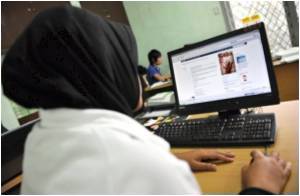Those harassed in the cyberworld could experience high levels of ongoing stress, anxiety, fear, nightmares, shock and disbelief, helplessness, hyper-vigilance and sleeping difficulties.

“Increasingly, stalkers use modern technology to monitor and torment their victims, and one in four victims report some form of cyberstalking, such as threatening emails or instant messaging,” said Elizabeth Carll.
“It is my observation that the symptoms related to cyberstalking and e-harassment may be more intense than in-person harassment, as the impact is more devastating due to the 24/7 nature of online communication, inability to escape to a safe place, and global access of the information,” Carll said
In her talk on “Electronic Harassment and Cyberstalking: Intervention, Prevention and Public Policy, ” she noted that according to the U.S. Department of Justice some 850,000 adults, the majority female, were targets of cyberstalking each year.
Citing various other sources, she gave examples of the pervasiveness, including:
40 percent of women have experienced dating violence via social media, which can include harassing text messages and disturbing information about them posted on social media sites.
Advertisement
34 percent of female college students and 14 percent of male students have broken into a romantic partner’s email.
“Imagine a cell phone application that can tell you if someone threatening you is nearby,” Carll said. “That could be life-saving.”
Law enforcement, legal assistance and other social service providers need training to use direct and electronic methods to intervene and prevent electronic harassment, and victims need training in the safe use of technology, she said.
In another session Friday, researchers released results of a study that found 36 percent of students had been cyberbullied at least once in the past year.
Researchers examined data collected in 2009 from 1,112 students, ages 12 to 19, 405 female, from schools in Seoul and the Keonggi area of South Korea. Of these, 225 were in elementary school, 678 in middle school and 209 in high school. The students completed a questionnaire about their cyberbullying experiences, self-esteem and how they regulate their emotions.
“The results revealed that cyberbullying makes students socially anxious, lonely, frustrated, sad and helpless,” said presenter YeoJu Chung, PhD, of South Korea’s Kyungil University.
The research explored how adolescents emotionally deal with cyberbullying. Students who said they ruminated, or obsessed, about the negative event were more likely to suffer serious stress from cyberbullying. In addition, people who blamed themselves for the situation were more likely to ruminate. Students who refocused on positive thoughts were able to cope and recover more quickly, according to the study.
Students reported that they were more negatively affected by cyberbullying when it was anonymous and in “one-sided sites such as blogs and cyber boards.” The research also showed that students who are victims of cyberbullying will often subsequently bully others online.
“Lots of adolescents have trouble recovering from negative effects of cyberbullying,” said Chung. “We can help them use emotion regulation skills to recover, rather than become bullies themselves.”
Source-Medindia






